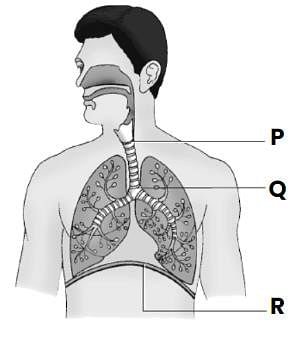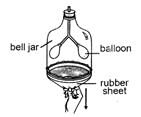Important Questions Test: Respiration in Organisms - Class 7 MCQ
15 Questions MCQ Test Science Class 7 - Important Questions Test: Respiration in Organisms
Identify X in the given equation of aerobic respiration.
Glucose + X → CO2 + H2O + Energy
The following word equation shows a chemical process that take place in an organism Y.

What is organism Y?

What will happen when diaphragm relaxes and curves upwards?
The classification table given below shows how different organisms breathe.

Which of these organisms are correctly represented by X, Y and Z?
When we inhale, we breathe in air into the lungs. What do we breathe out when we exhale?
What is the function of the hair in the nose?
Identify the labelled parts P, Q and R in the figure given below.

What will happen when the thin rubber sheet is pushed upwards?

What will happen when the thin rubber sheet is pulled downwards as shown in figure given below?

Which of the following organisms respire through tracheal system?
Why do we get, muscle cramps after heavy exercise?
Which of the following statements is correct for anaerobic respiration?
Which of these are parts of the human respiratory system?
(i) Larynx
(ii) Nostrils
(iii) Gullet
(iv) Windpipe
(v) Lungs
What happens when we breathe in?
(i) Size of our chest increases.
(ii) Size of our chest decreases.
(iii) Carbon dioxide is removed from our body
(iv) Air enters our lungs.
|
111 videos|246 docs|28 tests
|


















